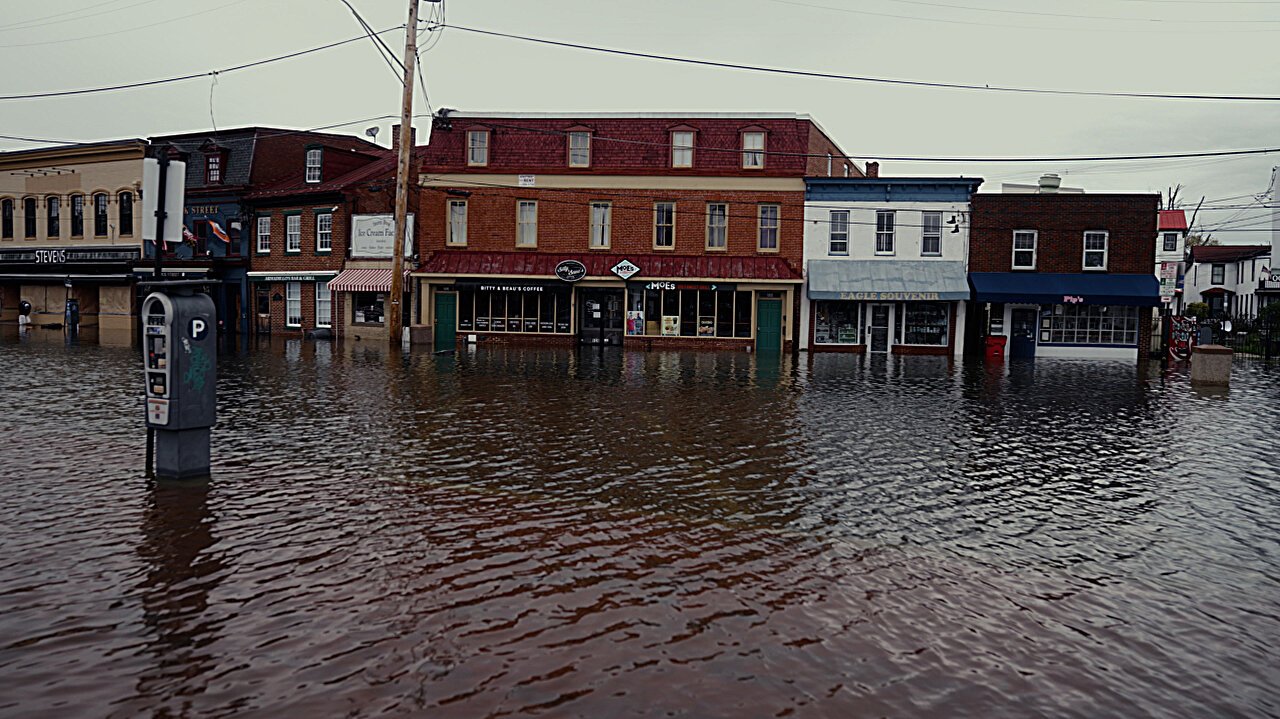
NOAA’s 2024-25 Annual High Tide Flooding Outlook predicts fewer high-tide flood days than last year.
The outlook documents high-tide flooding events from May 2023 to April 2024 at 97 NOAA tide gauges along the U.S. coast. It also provides a flooding outlook for these locations through April 2025 accompanied by decadal projections and sea level rise scenarios out to 2050.
High tide flooding, sometimes referred to as “nuisance” or “sunny day flooding,” is increasingly common due to long-term sea level rise, driven in part by climate change. It occurs when tides reach 1 to 2 feet above the daily average high tide, depending on location.
As sea level rise continues, it no longer takes severe weather to cause flooding along the coast. This flooding is increasingly disrupting life in our nation’s coastal communities, which are home to almost 40% of the U.S. population and support 54.6 million jobs.
“NOAA’s high tide flooding outlook is critical to the nation’s communities as they build their climate resilience,” said Jainey Bavishi, assistant secretary for oceans and atmosphere and NOAA deputy administrator. “The increase in high-tide flooding has affected infrastructure in coastal communities across America, especially in underserved communities.”
The 2024-2025 High Tide Flooding Outlook
NOAA predicts that from May 2024 to April 2025 the U.S. will experience a median range of 4 to 8 high-tide flood days—slightly fewer than last year’s predicted 4 to 9 days—as El Niño conditions transition into La Niña.
Communities along the Pacific Islands and the western Gulf Coast are predicted to experience the most high-tide flood days, ranging between 5 to 16 days and 7 to 15 days, across the respective regions. The Pacific Islands now experience a median of seven more high-tide flood days compared to the year 2000, a more than 250% increase, while the western Gulf experiences eight median high-tide flood days—a nearly 300% increase since 2000.
In addition, NOAA predicted an above-normal 2024 Atlantic hurricane season, which increases the chance of significant flooding along the Atlantic and Gulf coasts. Although these hurricane predictions are not factored into the high-tide flooding outlooks provided here, storm surge can lead to even higher water levels and cause additional flooding days or more substantial flooding impacts.
Along the West Coast, the shift to La Niña will be more noticeable as high-tide flooding in the region was largely driven by El Niño conditions rather than sea level rise. For the Pacific Northwest, up to seven flood days are predicted; for the Pacific Southwest, up to three days.
Due to long-term sea level rise, the U.S. now experiences an additional five median flood days per year compared to 2000—a roughly 200% increase. By 2050, the nation is expected to experience an average of 45 to 85 high-tide flooding days per year. Long-term projections are based on the ranges of expected relative sea level rise of about a foot, on average, across the United States by 2050.
Summary of high-tide flooding in 2023-2024
U.S. coastal communities in 34 locations broke or tied their records for high-tide flood days in 2023—a dramatic increase compared to just eight stations having done the same during 2022.
For the East and West coasts, a strong El Niño further compounded the effects of long-term sea level rise, worsening flooding impacts across those regions. Along the coastal Southeast, Charleston, South Carolina, observed 17 flood days. Along the East Coast, Atlantic City, New Jersey, recorded its highest number of flood days at 26, a large increase from eight days in 2022, while the station at The Battery, in New York, measured 24 days.
On the Gulf Coast, St. Petersburg, Florida, observed six flood days, its highest number on record, while Galveston Pier, Texas, saw 23 days, an increase from eight flood days in 2022. For the West Coast, San Diego observed 12 flood days—one day shy of its 2022 record.
About NOAA’s High Tide Flooding Outlooks
“More precise and timely data allows coastal communities to make better decisions about flood risks,” said Nicole LeBoeuf, director of NOAA’s National Ocean Service. “The monthly and annual outlooks allow communities to protect and improve local infrastructure.”
In addition to the Annual High Tide Flooding Outlook, NOAA provides its Monthly High Tide Flooding Outlook. This near-term outlook delivers high-tide flooding likelihoods for each day of the year—up to a year in advance— and provides predicted time ranges with increased flooding risks.
Communities can use NOAA’s Monthly and Annual High Tide Flooding outlooks to understand when, where and how often flooding may occur, so they can best plan for and lessen any potential impacts. NOAA continues to update these outlooks to best meet the needs of coastal communities on the frontlines of coastal change.
Data from the National Water Level Observation Network (NWLON) is the foundation for NOAA’s High Tide Flooding Outlooks. The NWLON is a network of more than 200 permanent water level stations on the U.S. coasts and Great Lakes. Through the NWLON, NOAA has been able to provide authoritative, historic and real-time data, forecasts, predictions and scientific analyses that protect lives, local economies and coastal environments for more than 100 years.
Provided by
NOAA Headquarters
Citation:
High tide flooding may lessen across the US, scientists predict (2024, August 6)
retrieved 6 August 2024
from https://phys.org/news/2024-08-high-tide-lessen-scientists.html
This document is subject to copyright. Apart from any fair dealing for the purpose of private study or research, no
part may be reproduced without the written permission. The content is provided for information purposes only.
